So You Want to Work for a Startup? Part Two
By True Ventures, October 19, 2010
In my last post, I talked about a few early startup milestones that you, a prospective employee at a startup, should know about.
I covered the following:
- Corporate vision defined
- Initial product focus defined
- Potential customers interviewed
- First prototype built
- Feedback from prototype incorporated
In this post, I’ll talk about the next few milestones any startup should be meeting, and, as a prospective employer, should be able to answer questions about. As before, I focus on a certain category of SaaS businesses, but the general principles apply broadly.
6. First trial customer
While the prototype is being built, the founders should be canvassing a trial customer. This trial customer could be different from the people that have been providing feedback on the prototype. Ask how long it took the team to find their first trial customer. A long time delta between prototype and trial indicates either an inability to ‘sell’ the idea, or a divergence from the actual market needs – both bad signs.
7. First customer with a working product
When a product first gets in the hands of the customers, more often than not, it’s ripped to shreds. Some of your fundamental assumptions about the target customer go out of the window. The technology just doesn’t work. There are way too many bugs or unplanned border conditions. This is normal. For this reason, the first customer with a product that ‘somewhat works’ might be different from the first trial customer, and this milestone might be hit months after the previous one. Look for humility and pragmatism in the founders – will they be able to go through this hump? Were they?
8. First planned iteration
At some point, the team will need to get into a ‘rhythm’. This is about when sprints/scheduled launches start making sense. Yes, the product does 10% of what it was intended to, and is massively buggy, but customers are able to get at least something out of it. Beware of startups that start planned iterations too early (eg in the prototype stage), or too late (eg when they have a lot of customers already using the product). The former will delay quick iterations during the rapid learning stage, while the latter will lead to massive stability issues and delay scaling up.
9. First paid customer
When the product reaches a certain feature/quality level, it will be possible to charge customers. Determining the actual pricing model for any service is a complicated matter – but every startup should be able to determine when it’s feasible to start charging customers for their services. If they are too early, the product will not be able to thrive as customers don’t perceive enough return on their investment. If they are too late, and not venture funded, it might mean the company will fold too early – and is an indication that they need better business development or sales talent.
Once these milestones are hit, the startup is a real business. However, whether it’s successful or not depends on how well they can scale up – both customer volume and happiness. These are milestones for the next post.
- 30% customer happiness milestone
- 70% customer happiness milestone
- Partnerships
- Revenue break-even
- Profitability
Incidentally, I can now share who the mysterious Mr G was from the previous post – none other than Gursharan Singh. Gurshi – welcome to Vurve!
What do you think? Feedback welcome in the comments, or email us at [email protected]. Want to join us for the ride (and find out what we’re actually up to)? Email us at [email protected]!
This post was written by Amit Kumar, Founder & CEO of Vurve, a True Ventures Portfolio Company.

